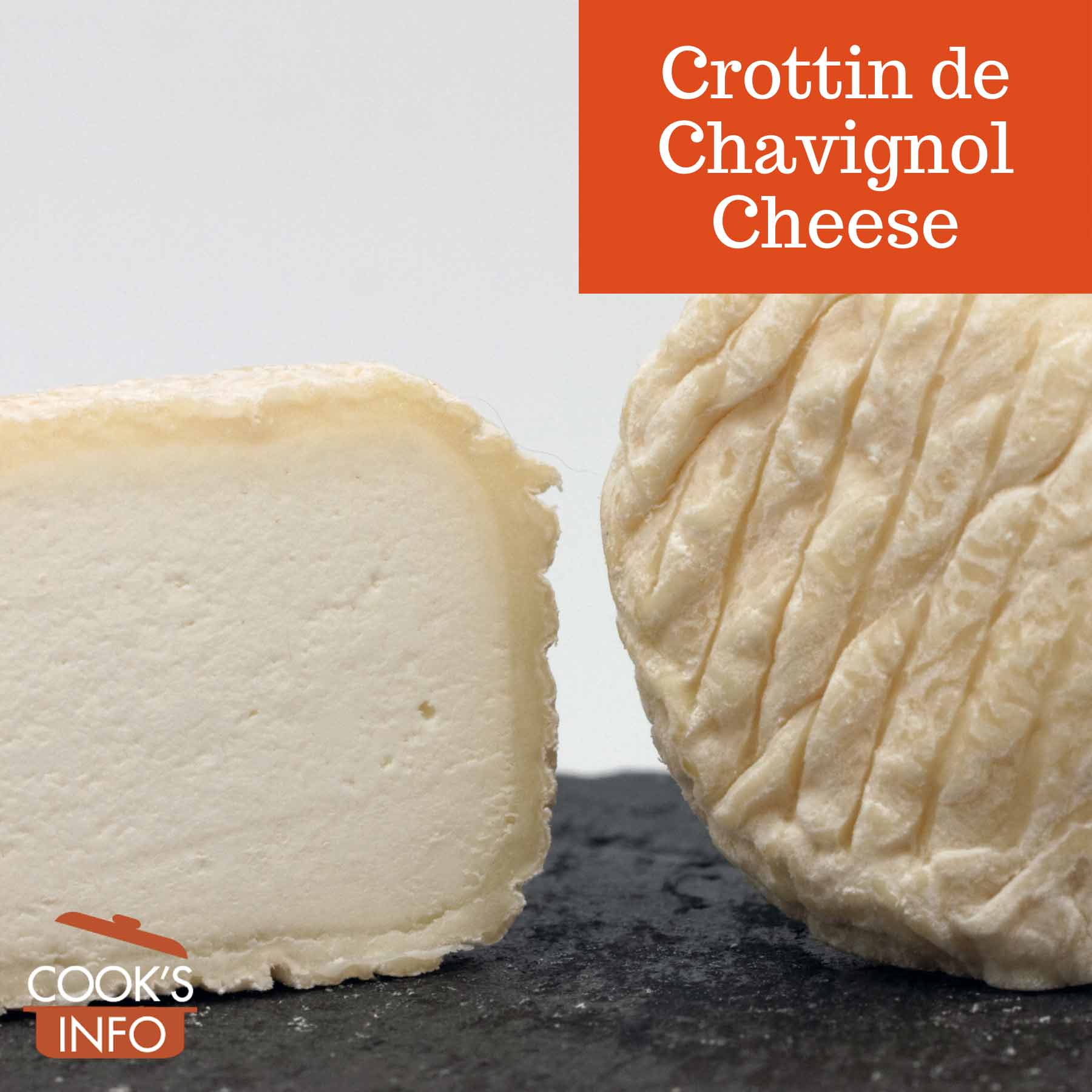
Crottin de Chavignol Cheese. Coyau / wikimedia / 2014 / CC BY-SA 3.0
Crottin de Chavignol cheese is shaped like a squat cylinder, 2 ½ cm tall, and 4 cm wide (≈1 inch by 1 ½ inches).
It is made from raw goat’s milk, (though the milk is pasteurized for an export version). In winter, it is made from frozen goat’s milk curd.
To make Crottin de Chavignol cheese, starter culture is first added to the milk, then rennet. The milk is allowed to curdle for 24 to 48 hours, then the curd is drained through a cloth and ladled into moulds with small holes to allow further drainage. The cheeses are then taken out of the moulds, salted, and aged for 10 days at a temperature between 13 to 16 C (55 and 60 F).
It can be then be eaten at any stage from fresh to very mature. When fresh, Crottin de Chavignol cheese is off-white and creamy inside, with no rind, and a mild goaty taste. As it starts to ripen, it develops a beige rind with white mould on it, and the inside darkens from pure white to ivory.
At 6 weeks, Crottin de Chavignol cheese is dry and brittle inside, with a strong taste and smell. The rind is hard, with a stronger taste to it than the inside has, and with blue mould having replaced the white mould. At 4 months, it can be too hard and strong for most people.
Each Crottin de Chavignol cheese starts off weighing about 140 g (5 oz) fresh. Around 6 weeks, it will weigh 55 to 85 g (2 to 3 ounces.) When 4 months old, it will weigh about 60 g (2 ounces.)
Crottin de Chavignol cheese is usually sold on to cheese agers for aging.
The cheese is made around Sancerre and Berry in the Loire area of France by both dairies and some independent farms. Chavignol itself is a town of just 130 people (2009 numbers, down from 200 in 2006) near the village of Sancerre.
History Notes
Producers claim production of Crottin de Chavignol cheese goes back to the 1500s, though the cheese is first mentioned in print in 1829. The cheese achieved its AOC status in 1976.
Language Notes
Pronounced “croh-tahn de sha-vee-nyol.”
“Crottin” in French means “turd” or “dropping” (sic).

